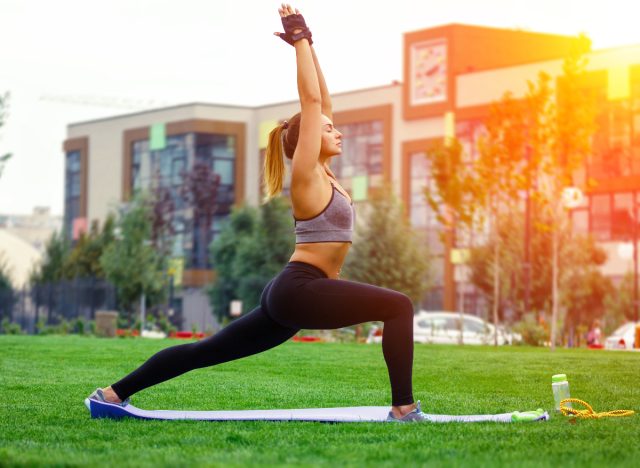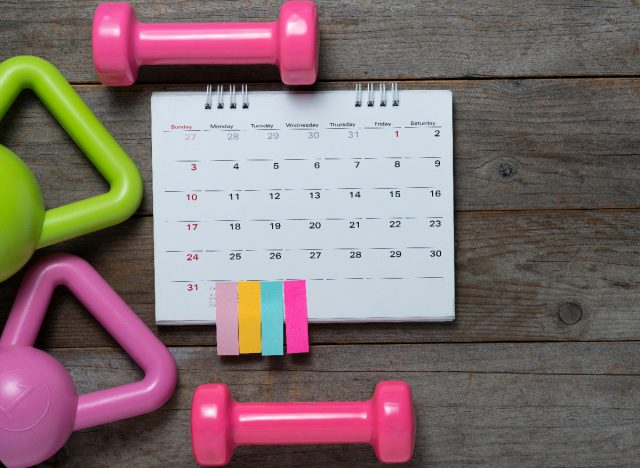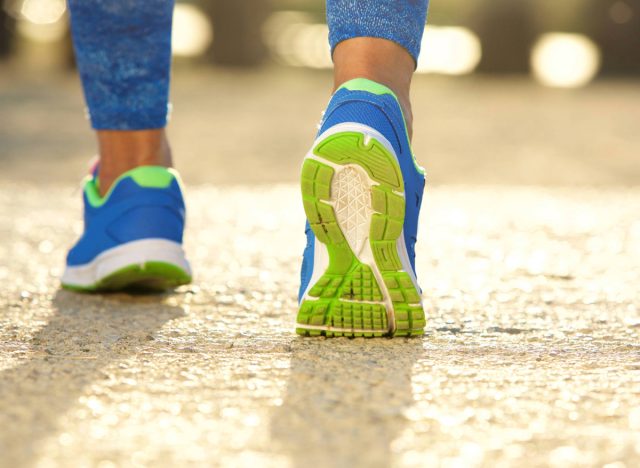Walking is one of the most accessible and effective forms of exercise for weight loss. It’s low-impact, easy to incorporate into daily routines, and requires no special equipment. This free form of exercise offers many health benefits, including improved cardiovascular health, mood, and energy levels. However, despite its simplicity, many people who are walking for weight loss inadvertently sabotage their efforts with common mistakes that can hinder their progress. Sound familiar? Get ready to take some notes.
Whether you’re a beginner lacing up your sneakers or a seasoned walker looking to optimize your routine, it’s crucial to understand these pitfalls to ensure you’re getting the most out of your workouts. From not walking enough to neglecting proper hydration, certain missteps can prevent you from achieving your weight-loss goals.
In this article, we’ll delve into the 10 most common mistakes people make when walking for weight loss and provide practical tips to overcome them. By fine-tuning your approach, you can enhance your walking routine, boost your calorie burn, and make significant strides towards a healthier, leaner you. Get ready to discover how minor adjustments can lead to significant results and clear the path to successful weight loss.
Not walking enough

While walking is a fantastic way to burn calories, simply taking a leisurely stroll a few times a week is typically not enough to see significant results. The key to effective weight loss through walking is to ensure you’re walking enough to create a calorie deficit.
Aim for at least 150 minutes of moderate-intensity or 75 minutes of vigorous-intensity exercise per week. If you’re just starting, gradually increase your daily step count and aim for around 10,000 steps per day. Consistency is key, so make walking a regular part of your daily routine.
Not increasing the intensity


Walking at a comfortable pace is better than not walking at all, but if your goal is to lose weight, you need to increase the intensity. This helps you burn more calories and improve cardiovascular fitness. There are a few simple ways to do this:
- Toss on a weighted vest or backpack, or even walk with a pair of light dumbbells. (Rucking is a great way to switch things up.)
- Switch up your terrain. Hills, trails, and rough surfaces all make a difference!
- Pick up your pace to a brisk walk to elevate your heart rate and boost your calorie burn.
- Try interval walking, which involves alternating between fast and slower paces.
- Challenge yourself by varying your speed and incorporating inclines.
Skipping your warm-up and cool-down


Skipping your warm-up and cool-down is a common mistake that can lead to injuries and hinder your progress.
Starting your walk with a five to 10-minute warm-up at a slower pace helps gradually increase your heart rate and prepare your muscles for the workout. Similarly, a cool-down period at the end of your walk allows your heart rate to return to normal and helps prevent muscle stiffness.
These steps can enhance your performance and reduce the risk of injury, keeping you on track with your weight-loss goals.
Neglecting nutrition


Poor dietary choices can sabotage your weight-loss efforts even if you’re walking regularly. To achieve results, pairing your walking routine with a healthy diet is crucial.
Avoid high-calorie, sugary, and processed foods, and focus on a balanced diet rich in vegetables, fruits, lean proteins, and whole grains. Proper nutrition fuels your body for exercise and helps to create the calorie deficit needed for weight loss.
Remember, exercise alone is insufficient; a healthy diet is integral to any weight-loss plan.
Forgetting to hydrate enough


Staying hydrated is essential for overall health and effective exercise performance, so drink up. Many people overlook the importance of drinking enough water, especially when walking. Dehydration can lead to fatigue and decreased performance, making maintaining an effective walking routine harder.
Drink water before, during, and after your walks, particularly in hot weather. Carry a water bottle and take regular sips to stay hydrated and energized throughout your workout.
Walking in the wrong shoes


Wearing the wrong footwear can cause discomfort and lead to injuries, deterring you from maintaining your cardio routine. Investing in a good pair of walking shoes with proper support and cushioning is crucial.
Shoes designed specifically for walking can help absorb shock, provide stability, and reduce the risk of foot and joint pain. Take the time to find a pair that fits well and feels comfortable, making your walks more enjoyable and sustainable.
Not including strength training in your routine


Relying solely on walking for weight loss is a common mistake. Incorporating strength training exercises twice a week can significantly boost your results.
Strength training builds muscle, which increases metabolism and helps burn more calories even at rest. Adding exercises like squats, lunges, pushups, and weight lifting to your routine can enhance your overall fitness and accelerate weight loss. Combining walking with strength training will create a more balanced and effective workout regimen.
Not planning enough recovery time between workouts


Rest and recovery are as important as performing the exercise itself. Not giving your body enough time to recover between walks can lead to overtraining, fatigue, and injury.
Listen to your body and ensure rest periods and days are incorporated into your weekly routine. Recovery allows your muscles to repair and grow stronger, improving your walking performance and helping you avoid burnout. Consider stretching, yoga, or light walking on rest days to stay active without overexerting yourself.
Not being consistent with your regimen


Inconsistency is a significant barrier to achieving weight loss through walking. Walking regularly and sticking to your routine to make progress is important.
Set a schedule and commit to it, treating your walks as non-negotiable appointments. Even on busy days, try to find time for at least a short walk to keep the habit going. A backup plan, such as hitting the treadmill or using a walking pad during work, can avoid barriers caused by busy days or weather.
Consistency builds momentum and helps establish a routine leading to long-term success in your weight loss journey.
Not switching up your walking route


Walking the same route can become monotonous and may cause you to lose interest in your routine. Additionally, your body can adapt to the same level of exercise, leading to a plateau in your progress.
To keep things exciting and challenging, switch up your walking routes regularly. Explore new neighborhoods, parks, or trails. After all, variety is the spice of life. Varying your route will keep you engaged while working different muscle groups.


